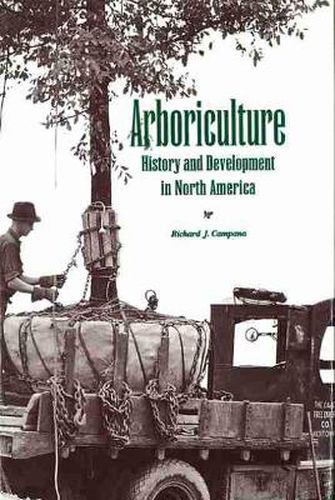Readings Newsletter
Become a Readings Member to make your shopping experience even easier.
Sign in or sign up for free!
You’re not far away from qualifying for FREE standard shipping within Australia
You’ve qualified for FREE standard shipping within Australia
The cart is loading…






Arboriculture - the emphasis on keeping trees alive and healthy - has emerged only recently as a profession, however, the practices in use today are the culmination of decades of development. This book, the first of its kind, chronicles a century of this love of trees view as it has developed into a viable profession.
Beginning with a discussion of the origins of planting, transplanting, and pruning, Richard Campana provides a breadth and depth of understanding of how arboriculture has become an important force in modern ecology. Specific topics discussed include: the introduction of woody plants into North America; botanical gardens and arboreta; gypsy moths; Dutch elm disease; the Davey, Bartlett, and Asplundh tree experts; herbicides, insecticides and fungicides; pruning; fertilization; wound treatment; and cabling, bracing, and lightning protection.
This unique history will be of interest to arborists, city foresters, landscape architects, nursery companies, contractors, park and city managers, superintendents of institutional grounds, educators, students, workers in land management, government and public utilities - and anyone involved in the preservation of trees.
$9.00 standard shipping within Australia
FREE standard shipping within Australia for orders over $100.00
Express & International shipping calculated at checkout
Arboriculture - the emphasis on keeping trees alive and healthy - has emerged only recently as a profession, however, the practices in use today are the culmination of decades of development. This book, the first of its kind, chronicles a century of this love of trees view as it has developed into a viable profession.
Beginning with a discussion of the origins of planting, transplanting, and pruning, Richard Campana provides a breadth and depth of understanding of how arboriculture has become an important force in modern ecology. Specific topics discussed include: the introduction of woody plants into North America; botanical gardens and arboreta; gypsy moths; Dutch elm disease; the Davey, Bartlett, and Asplundh tree experts; herbicides, insecticides and fungicides; pruning; fertilization; wound treatment; and cabling, bracing, and lightning protection.
This unique history will be of interest to arborists, city foresters, landscape architects, nursery companies, contractors, park and city managers, superintendents of institutional grounds, educators, students, workers in land management, government and public utilities - and anyone involved in the preservation of trees.